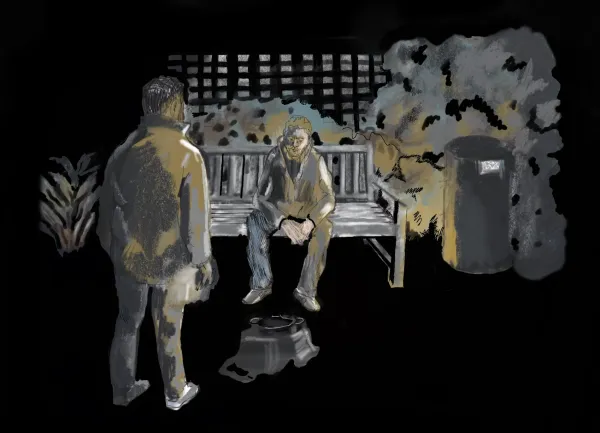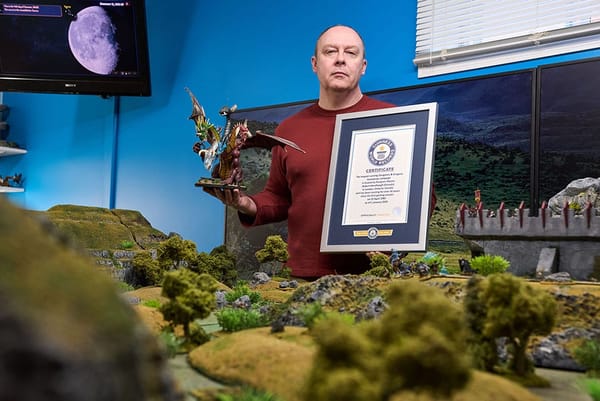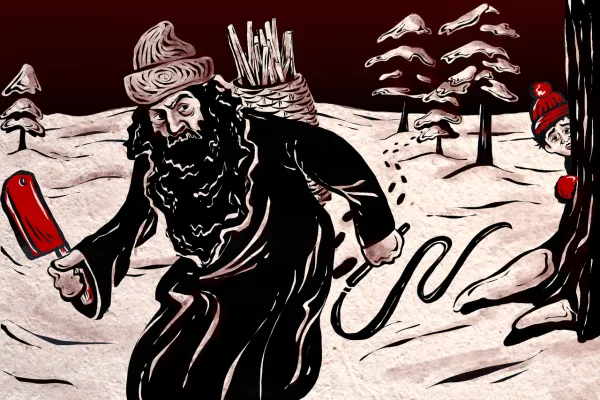What I inherited from my criminal great-grandparents
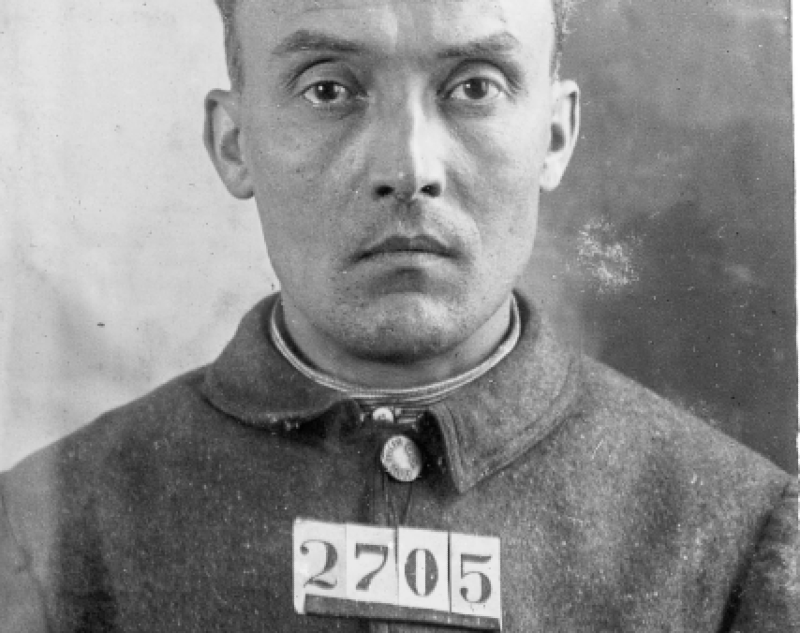
From the New Yorker: "Around sunset on a rainy Saturday in November, 1906, a woman walked the streets of Rochester, in western New York State, trying to off-load a stack of counterfeit two-dollar bills. She looked about forty, tall, broad in the beam, with dark eyes and dark hair; she wore a black fascinator and a long brown coat. On a main drag, she bought children’s clothes: an undershirt, a pair of drawers. A mile southeast, her fortunes cooled. When she offered one of her notes at a butcher’s shop, the clerk discovered it was a counterfeit, she said she had no other money and left," according to a report by a U.S. Secret Service agent on the woman’s trail. At a drygoods store, where she attempted to buy a pair of child’s stockings and garters, a clerk was sent out on the pretext of making change, but he was really seeking a policeman. The “woman shover,” as Agent Gammon referred to her, slipped away before she could be apprehended."
Someone indexed all the signs and visible text in New York City and you can search it
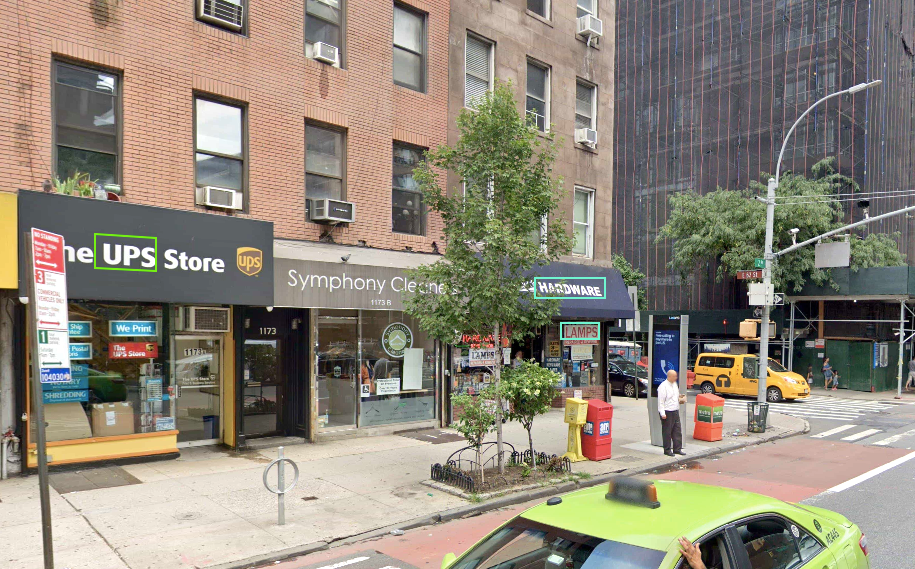
From The Pudding: "What if you could search every visible word on New York City’s streets? First, we’d need to transcribe every business sign, bumper sticker, ad, flyer—anything with text. This is possible because media artist Yufeng Zhao fed millions of publicly-available panoramas from Google Street View into a computer program that transcribes text within the images (anyone can access these Street View images; you don’t even need a Google account!). The result is a search engine of much of what’s written in NYC’s streets. It's limited to what a Google Street View car can capture, so it excludes text in areas such as alleyways and parks, or any writing too small to be read by a moving vehicle. The scale of the data is immense: over 8 million Google Street View images (from the past 18 years) and 138 million identified snippets of text."
A drone drops an electric bike to help Ukrainian soldier escape Russians

From Electrek: "In one of the most innovative battlefield escapes to date, a Ukrainian soldier managed to flee Russian encirclement thanks to a drone-delivered electric bike. According to reports from Ukrainian news outlet Censor.net and The Telegraph, the dramatic incident took place in the Donetsk region, where an injured Ukrainian serviceman found himself surrounded by Russian forces. With traditional evacuation deemed too dangerous, a team from the 35th Marine Brigade came up with a creative solution: use a drone to deliver an electric bicycle. The drone air-dropped an off-road electric bike directly to the trapped soldier’s location. Once the bike landed safely, the soldier used it to make a rapid, stealthy escape from the combat zone. It reportedly took two attempts as the first drone was shot down en route, requiring a second attempt to get the e-bike into the hands of the Ukrainian soldier."
Hi everyone! Mathew Ingram here. I am able to continue writing this newsletter in part because of your financial help and support, which you can do either through my Patreon or by upgrading your subscription to a monthly contribution. I enjoy gathering all of these links and sharing them with you, but it does take time, and your support makes it possible for me to do that. I also write a weekly newsletter of technology analysis called The Torment Nexus.
A growing number of scientists believe that human cells have a kind of memory

From Quanta magazine: "In 1983, the octogenarian geneticist Barbara McClintock stood at the lectern of the Karolinska Institute in Stockholm. She was famously publicity averse — nearly a hermit — but it’s customary for people to speak when they’re awarded a Nobel Prize, so she delivered a halting account of the experiments that had led to her discovery, in the early 1950s, of how DNA sequences can relocate across the genome. Near the end of the speech she changed the subject, asking: “What does a cell know of itself?” Forty years later, McClintock’s question hasn’t lost its potency. Some of those future biologists are now hard at work unpacking what “knowing” might mean for a single cell, as they hunt for signs of basic cognitive phenomena — like the ability to remember and learn. New research is revealing that single cells keep a record of their experiences for what appear to be adaptive purposes."
What Lamorna Ash learned from the Totteridge Yew, London’s oldest tree

From Kismet: "The Totteridge Yew is somewhere between 1,000 and 2,000 years old—once yews pass 250 years, it becomes harder to tell their age since all sorts of unusual things start happening to their growth rate. Like a much-annotated draft of a manuscript, new trunks spring forth and meld with the old trunk, making it difficult to determine the number of annual rings. This yew has witnessed hundreds of generations of humans pass through and out of the world. It might have been around for a portion of pre-Christian Britain, when trees were still venerated, and groves were sacred sites where important communal assemblies were held. But I never pressed my palm to the Totteridge Yew. “Every part of the yew but the berry is highly poisonous,” warned a library book I’d brought to the churchyard, The Yew-Trees of Great Britain and Ireland, by John Lowe, published in 1896 and written with far more energy and personality than a book about the history of yew trees realistically requires."
A group of Amish men carry a barn down the road to a new location

Acknowledgements: I find a lot of these links myself, but I also get some from other newsletters that I rely on as "serendipity engines," such as The Morning News from Rosecrans Baldwin and Andrew Womack, Jodi Ettenberg's Curious About Everything, Dan Lewis's Now I Know, Robert Cottrell and Caroline Crampton's The Browser, Clive Thompson's Linkfest, Noah Brier and Colin Nagy's Why Is This Interesting, Maria Popova's The Marginalian, Sheehan Quirke AKA The Cultural Tutor, the Smithsonian magazine, and JSTOR Daily. If you come across something interesting that you think should be included here, please feel free to email me at mathew @ mathewingram dot com
